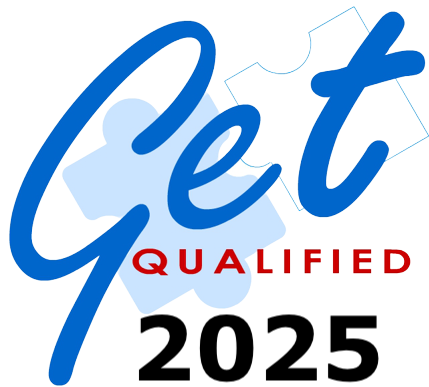

Malta Top 10 Personal Trainers

Get Qualified 2025 renewal
A Decade of Success: Celebrating EPTI’s Student Testimonials (2014-2024)
Over the past decade, the European Personal Training Institute (EPTI) has proudly equipped aspiring personal trainers with the skills, knowledge, and confidence to transform their lives and their clients’ lives. A cornerstone of our journey has been the overwhelming feedback we’ve received from our students. With over 500 glowing video testimonials recorded since 2014, these stories highlight the incredible impact EPTI has had on individuals from all walks of life.
In this blog, we reflect on the inspiring journeys of our students, the transformative power of personal training education, and how EPTI has evolved into Europe’s leading personal training course provider.
What Students Say About EPTI
1. Exceptional Education
From our very first student intake in 2014, one message has remained consistent: EPTI provides world-class education. Many students praise the comprehensive structure of our courses, combining online learning with practical, hands-on experience at our face-to-face, hands-on training campuses in Estepona, Malta, and now Tirana.
"The online learning was fantastic, and the practical weeks were even better! The trainers are supportive, knowledgeable, and genuinely want you to succeed." – Sarah, 2020 graduate.
2. Unrivalled Support
One theme that shines through in our testimonials is the unparalleled support provided by the EPTI team. Students often mention how the tutors and staff go above and beyond to ensure they feel confident and prepared.
"I was nervous about starting this course, but the EPTI team made everything so easy. They were always there to answer my questions and guide me every step of the way." – James, 2017 graduate.
3. Real-World Preparation
EPTI’s blend of theory and practice ensures graduates leave with a solid foundation and confidence to step straight into the fitness industry. Many students credit EPTI with giving them the tools they needed to secure their first job or start their own business.
"Thanks to EPTI, I got my first personal training job within weeks of graduating. The practical training really prepared me for working with clients." – Maria, 2019 graduate.
From Students to Industry Leaders
Over the years, many EPTI graduates have gone on to achieve remarkable success in the fitness industry. Some have opened their own gyms, others have built thriving online coaching businesses, and many have become industry leaders, inspiring others to follow in their footsteps.
Our Malta PT Directory and job board have been instrumental in connecting graduates with exciting opportunities. Many gyms across Europe and beyond have approached EPTI specifically to hire our alumni, recognising the exceptional quality of their training.
How Testimonials Shape EPTI’s Future
These testimonials are more than just reviews; they’re a testament to EPTI’s commitment to excellence. They’ve helped us refine and enhance our courses, ensuring we stay ahead of industry trends and continue to deliver the best education possible.
For example:
- Blended Learning: Feedback led us to perfect our online learning platform, making it more interactive and user-friendly.
- Specialised Courses: Requests for additional qualifications inspired the creation of CIMSPA-endorsed CPD courses, including kettlebells, circuits, and outdoor training.
- Global Reach: Positive reviews have helped EPTI expand, attracting students from all over Europe, the UK, and beyond.
A Message to Our Students
To our incredible students past and present: Thank you for being part of the EPTI journey. Your testimonials inspire us to keep striving for excellence and remind us of why we do what we do. Your success is our greatest achievement, and we’re proud to have played a role in your story.
Looking Ahead: 2025 and Beyond
As we celebrate a decade of student success, we’re more excited than ever about the future. With our new Tirana campus opening in 2025 and plans to continue innovating and expanding, the next decade promises even greater achievements.
Whether you’re considering joining the EPTI family or are one of our cherished alumni, know that we’re committed to supporting you every step of the way on your journey to becoming an exceptional personal trainer.
Hear Their Stories
Don’t just take our word for it—watch the inspiring testimonials of students who have transformed their lives with EPTI. Visit our Student Reviews page to see their journeys: EPTI Student Testimonials.
Join the Legacy
Ready to start your own personal training journey? Become part of EPTI’s legacy of success and take the first step towards a fulfilling career in the fitness industry.
Contact us today to learn more about our courses and campuses!
Walking: The Sixth Vital Sign and Its Profound Impact on Health

Walking, one of the simplest and most accessible forms of exercise, is increasingly being recognised as a powerful indicator of overall health. Dubbed the "sixth vital sign" by medical professionals, walking goes beyond being a mere mode of transport. It reflects how well our bodies function, and even subtle changes in gait can reveal underlying health conditions. This blog explores why walking is a cornerstone of physical well-being and how to make the most of it to enhance your health.
Why Walking is a Vital Health Indicator
Walking requires the harmonious interaction of multiple systems in the body, including the cardiovascular, muscular, skeletal, and nervous systems. Consequently, disruptions in walking ability can signal potential health issues.
Gait Speed: A Window into Your Health
Gait speed—or the pace at which an individual walks—is a crucial metric often used in medical assessments. Research suggests that slower walking speeds are linked to a higher risk of chronic diseases such as cardiovascular problems, diabetes, and even early mortality. A 2019 study published in The Journal of the American Medical Association (JAMA) found that faster walkers tended to live longer. Specifically, individuals who walked at speeds of 1 metre per second (roughly 3.6 km/h or 2.2 mph) or faster had a markedly higher survival rate compared to those with slower paces.
Why is this the case? Walking speed reflects the efficiency of multiple organ systems:
- Musculoskeletal Strength: A faster gait requires strong muscles and healthy joints, particularly in the legs and core.
- Cardiovascular Fitness: The ability to sustain a brisk pace indicates efficient blood flow, a healthy heart, and oxygen delivery to tissues.
- Neurological Function: Gait relies on coordination, balance, and motor control, all of which depend on a healthy nervous system.
Walking Speed as a Predictor of Disease
Gait speed is increasingly used in clinical settings as a diagnostic tool to predict chronic diseases and other health outcomes:
-
Cardiovascular Diseases: Slow walking speeds are often linked to higher risks of heart disease and stroke. A 2018 study published in The European Heart Journal found that individuals who walked at slower paces were twice as likely to develop heart-related issues compared to brisk walkers.
-
Cognitive Decline and Dementia: Research indicates a link between slower gait speed and the onset of dementia. A study from the University of Pittsburgh observed that changes in gait speed over time could predict cognitive decline, particularly in older adults. Walking slower may indicate reduced communication between the brain and muscles—a hallmark of neurological deterioration.
-
Post-Surgical Recovery and Frailty: Doctors often assess gait speed in older patients to gauge their recovery potential after surgery. Frail individuals with slower gait speeds tend to have longer hospital stays and higher complication rates.
The Health Benefits of Walking
Walking offers a multitude of physical and mental health benefits. It’s low-impact, requires no special equipment, and can be tailored to suit any fitness level.
1. Cardiovascular Health
Studies show that walking briskly for at least 30 minutes five days a week can significantly improve heart health by reducing blood pressure, lowering cholesterol, and increasing circulation. The British Heart Foundation endorses walking as a powerful preventive measure against heart disease.
2. Joint and Muscle Health
Walking helps maintain joint mobility, particularly in the knees and hips. It also strengthens leg muscles, which are crucial for overall stability and mobility. For those with arthritis or joint pain, walking can alleviate stiffness and improve range of motion when done regularly and at a moderate intensity.
3. Mental Well-Being
Walking has profound mental health benefits, reducing stress, anxiety, and depression. Engaging in outdoor walks, particularly in green spaces, has been shown to enhance mood, boost creativity, and improve cognitive function.
How to Improve Your Walking Technique
To reap the full benefits of walking, focusing on proper technique is essential. Walking effectively isn’t just about moving forward; it’s about engaging the body in a balanced and efficient way.
1. Maintain Good Posture
- Keep your head up and look forward, not at the ground.
- Relax your shoulders and swing your arms naturally.
- Engage your core to keep your torso stable.
2. Step Efficiently
- Land softly on your heel and roll through to your toes.
- Avoid overstriding, which can lead to unnecessary stress on your joints.
3. Find Your Optimal Pace
For health benefits, aim for a brisk pace that allows you to talk but makes singing difficult. A walking speed of 3–4 miles per hour is often recommended for cardiovascular benefits, but this can vary depending on fitness levels.
Complementing Walking with Other Exercises
While walking is an excellent standalone activity, combining it with other forms of exercise can amplify its benefits.
Strength Training
Incorporating resistance exercises, such as weightlifting, can strengthen muscles that support walking mechanics. Stronger muscles help maintain balance and prevent injuries.
Flexibility and Balance Exercises
Practices like yoga and tai chi can improve flexibility and balance, making walking more efficient and reducing the risk of falls.
Interval Training
For advanced walkers, interval training—alternating between fast and slow paces—can elevate cardiovascular fitness and calorie burn.
Making Walking a Daily Habit
Integrating walking into your routine can be simple and enjoyable. Here are some practical tips:
- Walk to Work or Errands: Replace short car trips with a walk whenever possible.
- Take Walk Breaks: Incorporate short walks during work breaks to reduce sedentary time.
- Explore Nature: Plan hikes or scenic walks to make the activity more engaging and relaxing.
- Use Technology: Fitness trackers can monitor your steps, speed, and distance, helping you stay motivated.
Conclusion: Walking for a Healthier Life
Walking’s designation as the "sixth vital sign" highlights its importance not just as an activity, but as a diagnostic tool for overall health. By paying attention to walking speed, technique, and incorporating it into daily life, you can take significant strides towards improving your well-being.
Whether you’re looking to prevent chronic diseases, boost mental health, or simply stay active, walking is a powerful and accessible tool for everyone. So, lace up your walking shoes and let your next steps lead you towards a healthier future.
References
- Studenski, S., et al. (2011). "Gait Speed and Survival in Older Adults." JAMA Network Open. Link
- Fritz, S., & Lusardi, M. (2009). "White Paper: Walking Speed – The Sixth Vital Sign." Journal of Geriatric Physical Therapy. Link
- British Heart Foundation. "The Benefits of Walking for Heart Health." Link
- Dumurgier, J., et al. (2017). "Gait Speed and Cognitive Decline: A Prospective Study." Neurology Journal. Link
- National Institute on Ageing. "Mobility and Longevity: Why Gait Matters." Link


